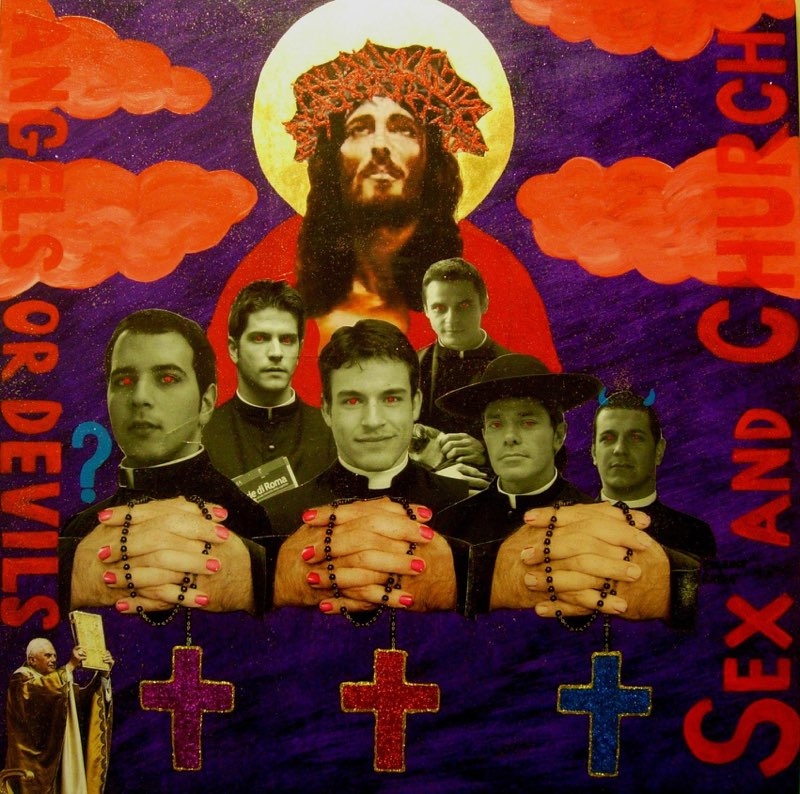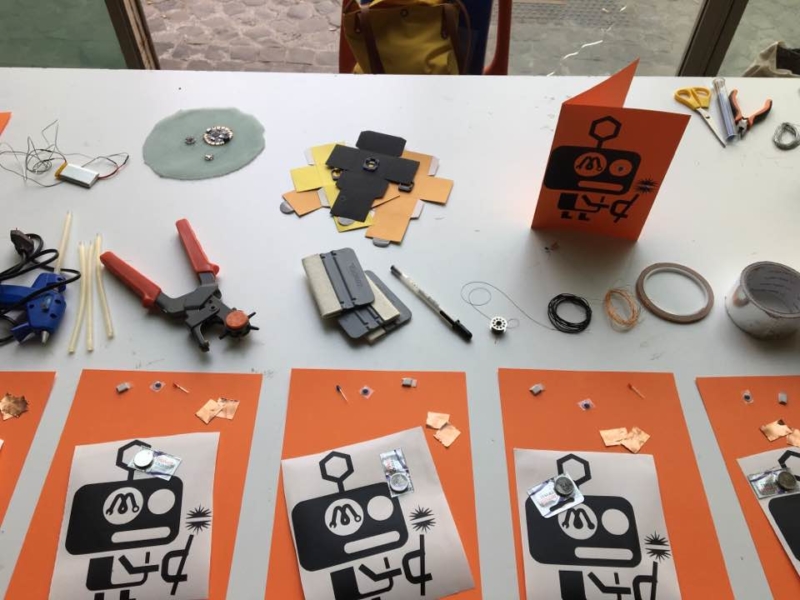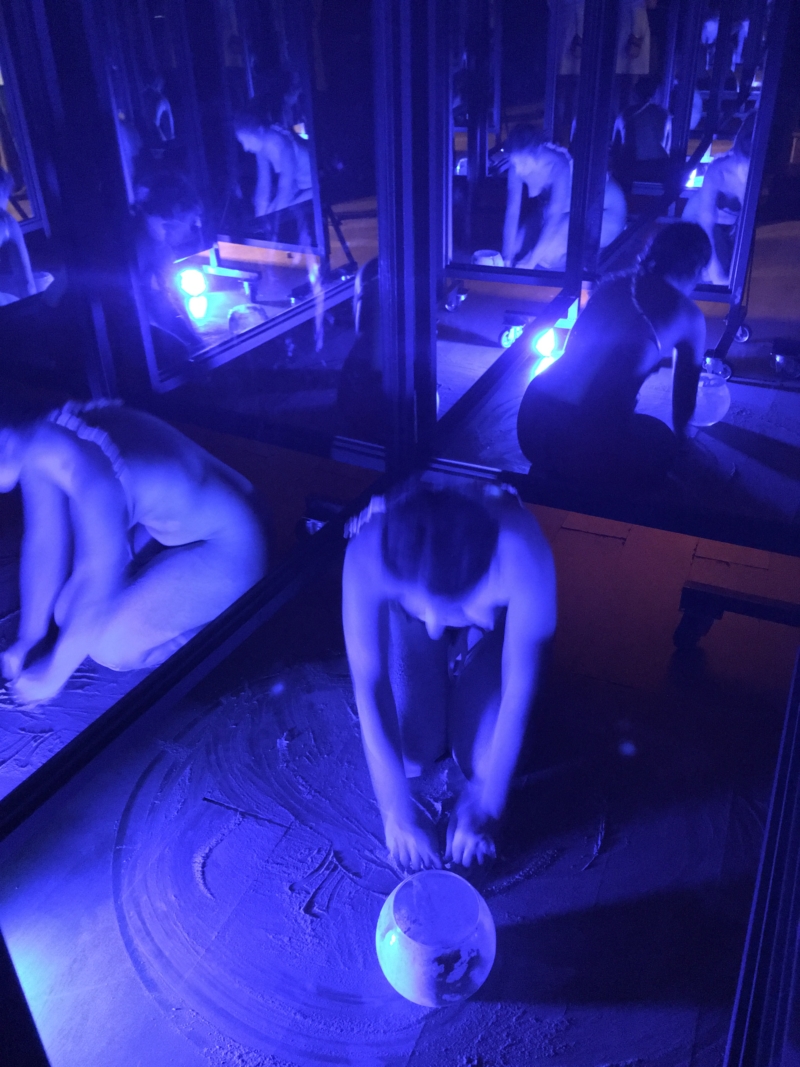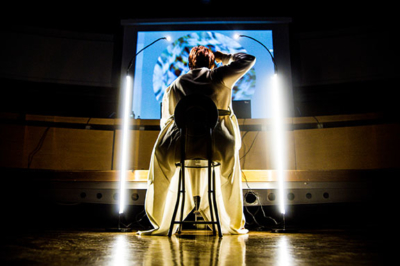
- Questo evento è passato.

SouvenirMania
27 Novembre 2010 @ 18:00 - 12 Dicembre 2010 @ 19:00
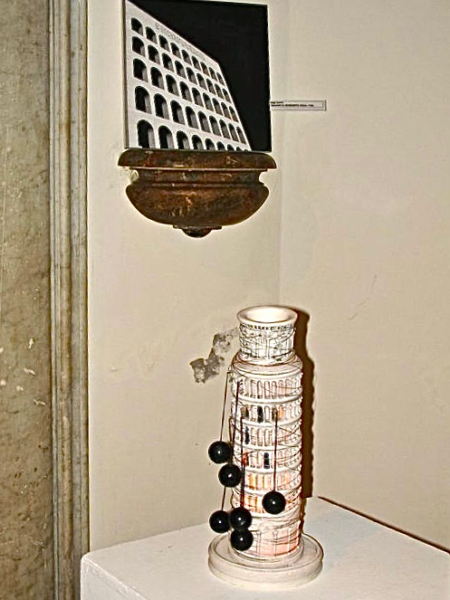 Sabato 27 novembre 2010 si inaugura presso la Basilica di Santa Maria in Montesanto – Chiesa degli Artisti in Piazza del Popolo a Roma, la mostra d’arte contemporanea SouvenirMania a cura di Antonietta Campilongo, un evento NewWorld Art, che vede la partecipazione di 30 artisti italiani sul tema dell’interpretazione creativa ed artistica del souvenir.
Sabato 27 novembre 2010 si inaugura presso la Basilica di Santa Maria in Montesanto – Chiesa degli Artisti in Piazza del Popolo a Roma, la mostra d’arte contemporanea SouvenirMania a cura di Antonietta Campilongo, un evento NewWorld Art, che vede la partecipazione di 30 artisti italiani sul tema dell’interpretazione creativa ed artistica del souvenir.
Con la presentazione di Francesco Giulio Farachi, l’esposizione s’incentra sul rapporto che l’oggetto-ricordo ha con i luoghi che rappresenta, e con l’immaginario collettivo che ne fa materiale simbolico di momenti e situazioni personali, e poi traduce in vera e propria mania, ossessione “benigna” che spinge ogni viaggiatore o visitatore ad una sorta di appropriazione rituale del luogo e dell’esperienza vissuti. “Il souvenir incarna aspetti diversi ed ampi, da oggetto per la memoria-nostalgia, a segno di omaggio e affezione, da citazione logora di posti arcinoti, a simbolizzazione di ambiti archietettonici, monumentali, paesaggistici, culturali. Fino ad essere aspetto e tema esso stesso, come prodotto e specchio di sistemi socio-economici, ad esempio della civiltà dei consumi, o al contrario di nicchie culturali e di un artigianato in estinzione, insomma come materia da analisi antropologica” *.
Partendo da questi presupposti, gli artisti propongono opere che, per il fatto di essere pensate come souvenir esse stesse, intendono riflettere sulla funzione che la creazione artistica può avere anche in un ambito che apparentemente ne costituisce la perfetta antitesi. Infatti, il souvenir normalmente viene recepito come oggetto di produzione seriale ed approssimata, che ricalca stereotipi logori e grossolani, oggetto di poco impegno economico e mentale. L’esatto contrario dell’opera d’arte, che invece dell’unicità, dell’invenzione immaginifica, della rottura con i modelli acquisiti, fa elementi essenziali della propria realizzazione e della propria “riuscita”.
Allora questi lavori vogliono provare a “saldare all’oggetto ricordo una delle sue funzioni primarie, che è quella di rievocare nella propria specificità ed unicità le specificità e l’unicità di una circostanza, di una presenza, di un momento vissuto, di una scoperta e di un viaggio. Perché il ricordo non deve necessariamente essere serbato nello scarso valore rappresentativo di un oggetto purchessia o di una reminiscenza quanto più mediocremente convenzionale immaginabile, ma al contrario dovrebbe trovare il riflesso della propria (magari piccola, intima, privata) eccezionalità nella singolarità dell’oggetto, e quindi della visione, cui si lega” *.
Infine, al tema dell’oggetto si allaccia quello della visione dei luoghi, delle loro peculiarità, della loro riconoscibilità, e delle rappresentazioni che universalmente li individuano. In una città come Roma, contesto da questo punto di vista ostico ed abusato, l’abilità degli artisti si carica di questa ulteriore sfida, quella di “contribuire a scovare una visione finalmente fresca, non preconcetta, e non-solita della Roma più vera” *.
dalla presentazione di F.G. Farachi

Nice this idea of souvenir. Nice the idea to join an art exhibition to a subject so heterodox and so heterogeneous. Nice to do it in a city like Rome, a city of art and souvenirs, tourist and cultural destination, but not only this. Not only a showcase-city as can be Venice or Florence, but a complex and sprawling city, made of ambiguous and various levels, ranging from a common metropolis, as many others in the world, to a political, economic, social, cultural center. Mental place for modern fantasies and historical reconstructions, for illusions and poetic. A real and imaginary city together. Rome as a worldly and religious place of pilgrimage, Rome to see and to remember, to evoke in symbols and clichés. To keep always in our memory with a souvenir.
In our age of short distance, fast and comfortable trips, consumerism, Rome, and not just Rome, is overwhelmed by the human compulsions – always and ever present in every age and at any latitude. Among them, the obsession about the memory-object, the souvenir, is the most common, normal, and maybe, the most safe and justifiable. It’s the proof tested of an experience, similar to the other obsession of modernity, as the speed, haste, fast and voracious consumption. A nice souvenir stands there, motionless, fixed, immutable, fixing over time not only the fact (for example, the trip), but also the subject (what we have seen, place or time of our visit, etc.) so that our mind and imagination will have a stable and concrete reference. A sort of short eternity. But the object-memory also reduces hints and condenses into a single element the multiplicity of events, emotions, thoughts and impressions. Quick, fleeting and abstract reference, memory prêt-a-porter.
The souvenir actually embodies different and wide aspects. The nostalgia object, an affection sign, it symbolizes landscapes or architectural, monumental and cultural areas.
Our exhibition aims to be placed in this context of allegories for the memory use, congenial environment for the arts and artists work, exciting and new, trying to provide the visitor with a collection and a sham. The art works are in truth playing on the fact of speaking of souvenirs, and about being themselves souvenirs. The visionary and creative ability challenges the stereotypical images and serial tourism products, taking back them the shiny patina of uniqueness.
The memory-object has the primary function to evoke the uniqueness of a lived moment, a specific circumstance or a trip. The memory has to find its reflection -perhaps small, intimate, private- in the exceptional singularity of the object, and therefore to the view to which is bound.
Moreover, it serves to create a staging, or rather a focus, on modes of representation of places. A lot of Art History has been formed thanks to these visions / feelings, we think about Corot or De Chirico, Picasso, who worked on connecting visionary places, travel, symbols and objects. Also Burri, Palladino, Luca Bonnet and many others.
This initiative (which could be the first of a series of exhibitions and performances), has the hard task to operate within the physical and imaginative Rome. Designing a new, original, authentic object or image in the abused context of Rome, and that’s not easy.
However, and precisely because of such considerations, it is certainly a commitment that can shed light on creative ability and skill, invention and taste of illusion and decorative metaphor.
The theme of the souvenir opens multiple perspectives through which to glance at the city in a new way, and to finally find a fresh vision, not preconceived of the truth Rome.
A cura di Antonietta Campilongo
Organizzazione: nwart
Special Guest: SouPop/Opera |Eugenio Rattà
Artisti presenti:
Artisti Innocenti, Liliana Avvantaggiato, Claudio Barbagallo, Rosella Barretta, Rossana Bartolozzi, Paolo Camiz, Antonietta Campilongo, Elena Candoli, Adriana Cappelli, Cristina Castellani, Antonella Catini, Gabriele Catozzi, Antonio Ceccarelli, Nellì Cordioli, Paola de Santis, Daniela Foschi,,Andrea Greco, Pier Maurizio Greco, Angelo Ingrasci, Luciano Lombardi, Cinzia Mastropaolo, Sante Muro, Giovanni Novi, Simonetta Pizzarotti, Elettra Porfiri, Eugenio Rattà, Luigina Rech, Patrizia Ricchiuti, Daniela Romano, Stefania Scala, Irene Taddei.
Performance: E t e r n i v a l | performance di artisti§innocenti





















